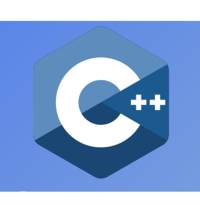| C++ Nanodegree From Udacity |
| Written by Sue Gee | |||
| Thursday, 04 April 2019 | |||
|
The latest addition to Udacity's range of Nanodegrees, its hands-on, career-oriented, credentials, is a 5-month program that teaches the foundations of C++. Although C++ is among the top five programming languages, you won't find many highly recommended opportunities to learn it online. It is seen as a difficult language, a reputation which it probably deserves, but as the promotional video for the Nanodegree outlines, it is at the heart of many complex, high performance, systems:
In the video Bjarne Stroustrup, the creator of the language explains that C++ is used for the "foundational parts" of just about anything we do, saying: "It sticks in between the higher-level software and the hardware and that's a much bigger part of the world that most people think. It's basically everywhere." As David Silver, head of Udacity's School of Autonomous Systems, puts it C++ is the common thread between self-driving cars, drones and robotics and Udacity co-founder. If you are still not convinced of its worth, self-driving car pioneer, Sebastian Thrun adds: “Self-driving cars would not be possible without C++. “I programmed the self-driving car that won the DARPA Grand Challenge using C++. The Google Self-Driving Car Project, now called Waymo, was launched with C++.” The prerequisites for the program are intermediate knowledge of object-oriented programming in any language. The program comprises four courses and a Capstone Project:
Each of the four courses culminate in a C++ project:
Enrol before April 23 to be part of the inaugural class. The cost is $999. More InformationRelated ArticlesThe Benefits of A Udacity Nanodegree Start Your Career With Udacity Nanodegree Insider's Guide To Udacity Android Developer Nanodegree Udacity Withdraws Jobs Guarantee Udacity Announces School of AI C++ Where Is It Heading? C++17 In Praise Of C++ Bjarne At ICPC To be informed about new articles on I Programmer, sign up for our weekly newsletter, subscribe to the RSS feed and follow us on Twitter, Facebook or Linkedin.
Comments
or email your comment to: comments@i-programmer.info |
|||
| Last Updated ( Sunday, 26 July 2020 ) |



